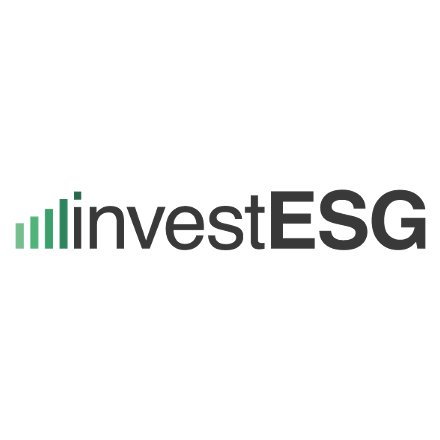INSIGHT by the Climate Bonds Initiative

The report contains a selection of nine company case studies from the following sectors, automotive, basic industries, energy, healthcare, technology & electronics, telecom, transportation, and utilities. The target companies were among some of the more advanced organizations incorporating climate mitigation and adaptation strategies into their Asia operations.
With regards to focusing on renewable energy and greenhouse gas (GHG) measurement, most of the companies adopted climate mitigation strategies by procuring renewable energy and measuring and reporting at least Scope 1 and Scope 2 GHG emissions. However, fewer companies had set 1.5-degree science-based targets and/or publicly committed to net zero goals.
ISSUERS: companies contributing to the transition are not necessarily prepared for climate risksNone of the 483 companies domiciled across 33 geographies examined in the study performed well across all three CCIF objectives. Even among green bond issuers, this analysis did not identify any issuers that did well on all three objectives of the CCIF: mitigation (target-setting and strategies), adaptation (low-risk exposure and/or adaptation plans and strategies), and financial contribution (green revenues).
Furthermore, this analysis finds that most companies are subject to physical climate risks but are not taking actions to manage them. Only 14% of companies researched have an adaptation and resilience plan in place, leaving the rest exposed to potential loss of financial value.
While sectors and corporates are more climate mitigation focused, more concentrated efforts are needed toward climate adaptation planning and implementation. For the sampled entities, operations across diverse geographical locations, climate mitigation and adaptation data inconsistencies, and company financial capability were among the challenging factors in performing well across all three CCIF objectives.This report offers a first snapshot of how sectors, companies, and issuers are performing and provides valuable insight for both investors and the issuers themselves. Dongik Lee, Director General, Banking Department (Region 1), from AIIB, said “The mandate proved to be a suitable one for many sophisticated investors globally. We look forward to our continued efforts to mobilize private capital channeling to the much-needed funding gap in climate change fixed-income instruments in developing countries. I am also happy to share the Companies and Climate Change research report developed by Fitch Solutions, The Carbon Trust, and Climate Bonds Initiative. This research illustrates how CCIF can help investors systematically integrate climate-related issues in their investment decisions.” Jean-Jacques Barbéris, Head of Institutional and Corporate Clients Division & ESG, Amundi, comments “As a global leader in responsible investing, we believe that it is our responsibility to encourage and accelerate the transition of companies towards a low-carbon economy, including in emerging market and developing economies where climate risk will be most acute. Amundi is pleased to see that the AIIB-Amundi Climate Change Investment Framework is being adopted by institutional investors. This Framework is a pioneering tool that translates the three key objectives of the Paris Agreement into fundamental metrics to equip investors with a new tool to assess the level of issuers alignment with climate change mitigation, adaptation and low-carbon transition objectives. Using the report hand in hand with the Framework offers both issuers and investors valuable insight on how companies are performing and identifies the gaps for improvement.” Michelle Karavias, Global Head of Industry Research, Fitch Solutions, said “There is a high level of inconsistency in how different sectors have responded to the Paris Agreement objectives. Whilst most sectors report on carbon emissions and reduction targets (mitigation) with a level of consistency, this is much less the case for companies reporting on how they are adapting to climate change (adaptation) or contributing to the transition to a low carbon economy (contribution). Notably, there is a correlation between industries where carbon emissions are more directly related to their business models (e.g., energy, utilities, transport). These companies have developed clearer policies and report more data around their contribution to transition. There does need to be a greater level of consistency in data reporting standards to enable a comparability of company and sector performance, especially at a time when more investment managers are systematically and explicitly including ESG factors into their financial analysis and decision-making.” Chris Stephens, Director, Asia and Africa, the Carbon Trust, mentioned “Credible frameworks are essential as they provide a common set of metrics and methodologies through which investors can align. The Climate Change Investment Framework (CCIF) will help drive climate compatible finance at the scale and pace needed, which is crucial to achieving the Paris Agreement. Building on our experience of developing frameworks across multiple sectors, it has been fascinating to test and apply the CCIF by developing this series of case studies. The results highlight the commendable efforts taken by some Asian companies; however, there is much more to be done. Recognising the region’s exposure to the impacts of climate change and rapidly changing policy environments, Asian companies need to carry out more detailed assessments of their climate risks and opportunities. On the mitigation side, GHG measurement across all Scopes 1, 2 and 3 is a critical first step, to be followed by more ambitious 1.5 degrees science-based targets.” Sean Kidney, CEO and Co-founder, Climate Bonds Initiative, said “The AIIB-Amundi's CCIF is a pioneering assessment tool for investors, and the findings of this report reveal intriguing insights about the climate performance of issuers and their sectors.”“We must accelerate our efforts to both mitigate and adapt to climate change. Adaption and resilience are now centre stage, it’s not one or the other, the climate challenge is fight on both fronts.”Investors are increasingly looking to understand, measure, and track the climate strategies of companies to meet customer demand and contribute to Paris Agreement targets. However, the level of information available and the quality of data reported varies across countries and industries, making it difficult to make comparisons and do benchmarking. The AIIB-Amundi Climate Change Investment Framework (CCIF) seeks to provide investors with the ability to screen investments based on climate-related factors and quantify and manage their climate change-related risk exposure. All opinions expressed are those of the author and/or quoted sources. investESG.eu is an independent and neutral platform dedicated to generating debate around ESG investing topics.
